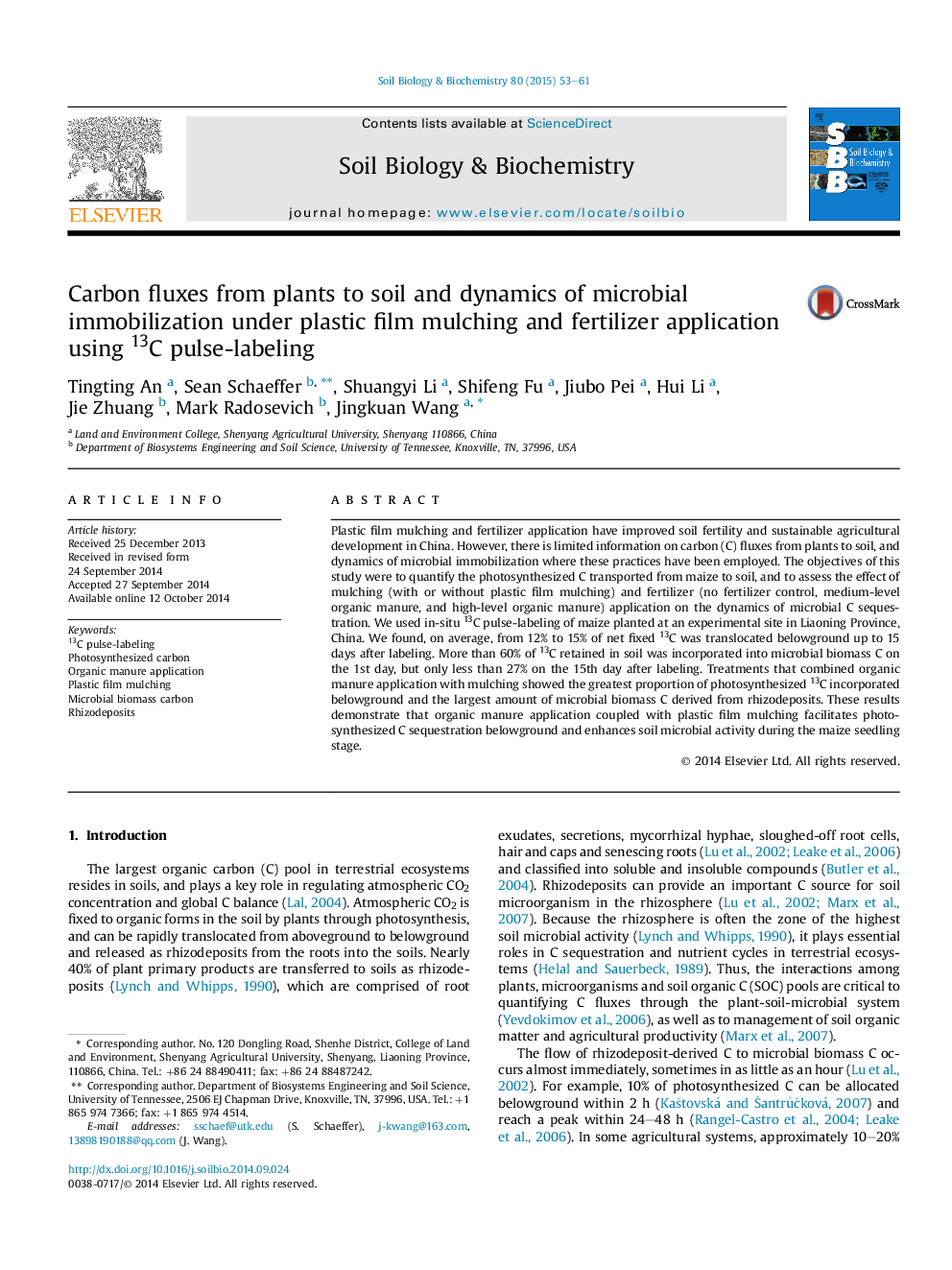| Article ID | Journal | Published Year | Pages | File Type |
|---|---|---|---|---|
| 8364370 | Soil Biology and Biochemistry | 2015 | 9 Pages |
Abstract
Plastic film mulching and fertilizer application have improved soil fertility and sustainable agricultural development in China. However, there is limited information on carbon (C) fluxes from plants to soil, and dynamics of microbial immobilization where these practices have been employed. The objectives of this study were to quantify the photosynthesized C transported from maize to soil, and to assess the effect of mulching (with or without plastic film mulching) and fertilizer (no fertilizer control, medium-level organic manure, and high-level organic manure) application on the dynamics of microbial C sequestration. We used in-situ 13C pulse-labeling of maize planted at an experimental site in Liaoning Province, China. We found, on average, from 12% to 15% of net fixed 13C was translocated belowground up to 15 days after labeling. More than 60% of 13C retained in soil was incorporated into microbial biomass C on the 1st day, but only less than 27% on the 15th day after labeling. Treatments that combined organic manure application with mulching showed the greatest proportion of photosynthesized 13C incorporated belowground and the largest amount of microbial biomass C derived from rhizodeposits. These results demonstrate that organic manure application coupled with plastic film mulching facilitates photosynthesized C sequestration belowground and enhances soil microbial activity during the maize seedling stage.
Related Topics
Life Sciences
Agricultural and Biological Sciences
Soil Science
Authors
Tingting An, Sean Schaeffer, Shuangyi Li, Shifeng Fu, Jiubo Pei, Hui Li, Jie Zhuang, Mark Radosevich, Jingkuan Wang,
